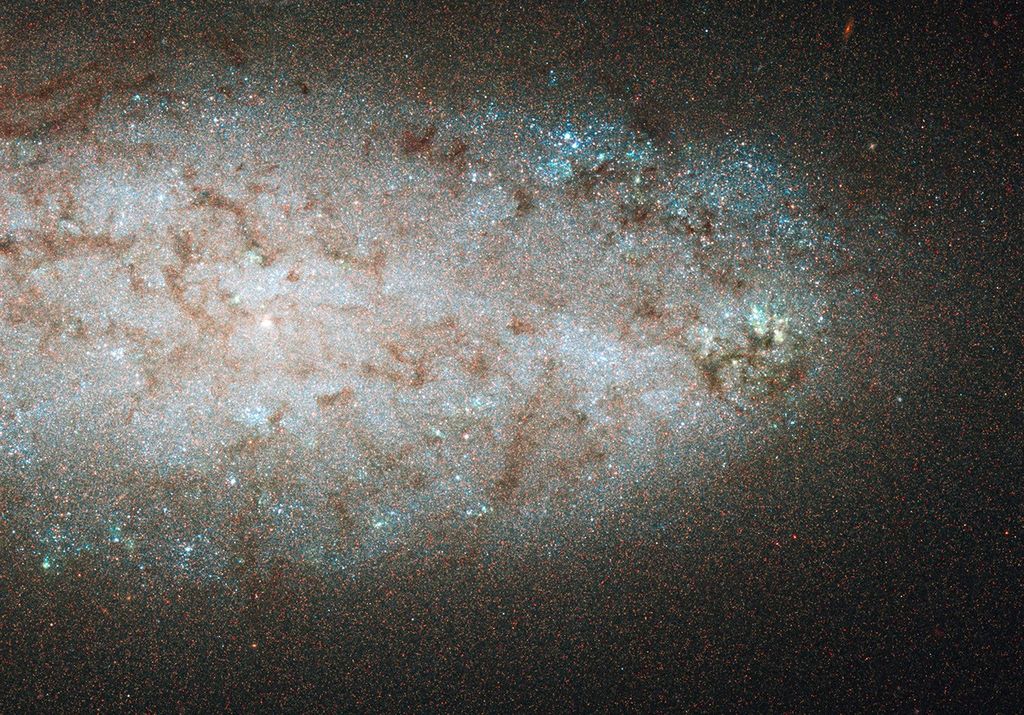NGC 2976 Galaxy is a dwarf spiral galaxy located in the constellation Ursa Major and is approximately 11.6 million light-years away from Earth. Discovered by William Herschel in 1788, this celestial object is classified as a member of the Messier 81 (M81) Group. Observations reveal that NGC 2976 has exhibited structural and dynamical changes as a result of past interactions with larger galaxies within the M81 Group.

NGC 2976 Galaxy (NASA)
Technical Specifications
NGC 2976 is classified as a SA(s)cd type galaxy; this classification indicates that it has an unbarred structure and is a late-type spiral galaxy with prominent spiral arms. According to the J2000.0 coordinate system, its position in the sky is defined by the right ascension of 09 hours 47 minutes 15.3 seconds and a declination of +67° 54′ 59″. Its apparent magnitude in the V-band is +9.8, and its angular dimensions are approximately 5.9 × 2.7 arcminutes. Its distance from Earth is calculated to be about 3.6 megaparsecs (approximately 11.6 million light-years). With these characteristics, NGC 2976 is a spiral galaxy that allows for detailed observations due to its relative proximity.
Morphological Features and Star Formation
NGC 2976, although it has weak traces of spiral arms, lacks a bar structure and has an asymmetric disk. In the optical band, the galaxy exhibits an irregular morphology, while infrared observations show a more regular structure. The H I (neutral hydrogen) distribution is asymmetric, extending diffusely and with low density in the outer regions. Kinematic analyses reveal deviations in the galaxy’s outer regions from the flat rotation curves typically observed in spiral galaxies. This provides a significant example for analyzing the density profile of the dark matter halo structure.
NGC 2976 contains regions with active star formation; however, it is generally classified as a galaxy with low surface brightness. Hα and UV observations show that star formation is concentrated in the inner regions of the galaxy. The metallicity of the galaxy is lower than that of the Sun, offering insights into the star formation history and gas flow processes.
Dynamic Structure and Environmental Factors
NGC 2976 has been the subject of various studies regarding the distribution profile of dark matter. In particular, the flat structures observed in the rotation curve’s inner regions provide empirical data on whether the central density profile of dark matter is cuspy or core-like. In this respect, the galaxy has been used to test predictions related to the ΛCDM (Lambda-Cold Dark Matter) model.
Gravitational interactions with other members of the M81 Group in the past may have caused kinematic distortions and gas losses in the disk structure of NGC 2976. In this context, the galaxy serves as an important example for studying the effects of environmental interactions on low-mass systems.


